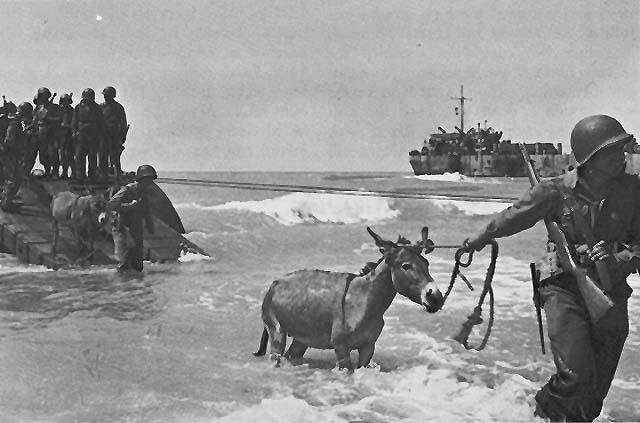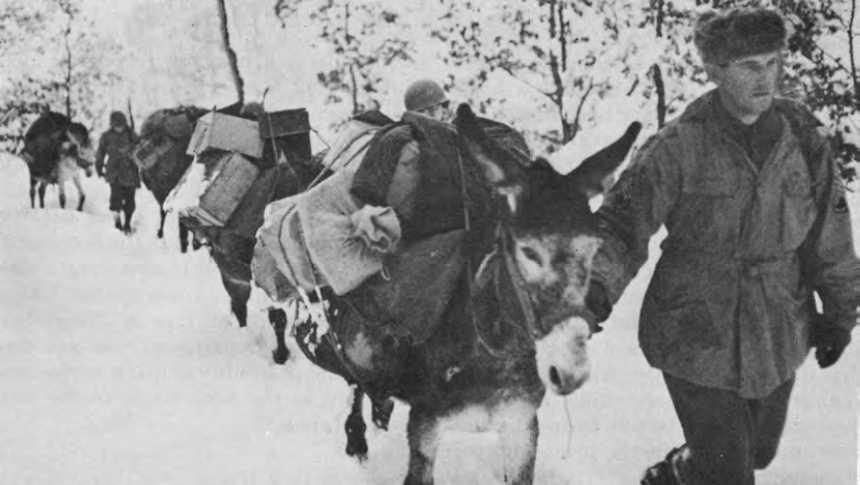-
Contributing Member


17-2-24 Garand Picture of the Day - Licata

Information
 |
Warning: This is a relatively older thread
This discussion is older than 360 days. Some information contained in it may no longer be current. |
|
He is no fool who gives what he cannot keep to gain that which he cannot lose
There are no great men, only great challenges that ordinary men are forced by circumstances to meet.
-
The Following 12 Members Say Thank You to Mark in Rochester For This Useful Post:
#1oilman,
25-5,
30-06_mike,
aspen80,
Bill Hollinger,
Bob Womack,
CINDERS,
ed skeels,
fboyj,
frankderrico,
RazorBurn,
sjc
-
02-24-2017 01:25 PM
# ADS
Friends and Sponsors

-
Advisory Panel


Just the sort of job I'd want...hauling A$$...
-
The Following 5 Members Say Thank You to browningautorifle For This Useful Post:
-
Legacy Member

You have to wonder. Those aren't the mules you'd expect, but donkeys. Are they going be used to haul equipment or to be gifted to the locals to smooth things over?
-
The Following 2 Members Say Thank You to Paul S. For This Useful Post:
-
Contributing Member



Demand for Pack Mules
In contrast to the declining interest in horses, the demand for mules increased during the war. This shift in requirements is illustrated clearly by records on file in the Remount Branch, OQMG, showing the number of animals purchased in the United States during the war. These records reveal that purchases of horses outnumbered those of mules by more than five to one in the fiscal year 1941, and by nearly two to one in the fiscal year 1942 when procurement of both kinds of animals dropped off sharply as the need for them failed to materialize. The situation changed radically, however, beginning with the fiscal year 1943, when only four horses were purchased, and none were purchased thereafter. In the same year 10,200 mules were procured, and in the final two years of the war, more than 14,000
during the war. These records reveal that purchases of horses outnumbered those of mules by more than five to one in the fiscal year 1941, and by nearly two to one in the fiscal year 1942 when procurement of both kinds of animals dropped off sharply as the need for them failed to materialize. The situation changed radically, however, beginning with the fiscal year 1943, when only four horses were purchased, and none were purchased thereafter. In the same year 10,200 mules were procured, and in the final two years of the war, more than 14,000
Battle experience in the winter of 194243 accounted for the sudden interest in procurement of mules. Observers overseas reported that Army ground units had discovered in their early encounters with the enemy that while modern warfare had made the general use of horse cavalry of questionable value, there was no question about the need for animals in rugged mountain terrain where few if any roads existed. Standard cargo trucks, experience revealed, could be used only on the main roads in the mountains. Jeeps could usually negotiate the narrow twisting trails in the lower ranges, but beyond the jeep trails, where much of the fighting took place, animals were needed to pack supplies to the foxholes, dugouts, and gun emplacements of the troops who carried the fight to the enemy. The mule was preferred to the horse for this task because it was surer of foot, more hardy, and consumed less food.
Pack mules were utilized by U.S. forces initially in World War II in Tunisia during the winter of 1942-43. The number used there, however, was comparatively small. When the fighting moved over to Sicily many more were used,28 but it was in the rugged mountain terrain of Italy that mules were employed for the first time on a really extensive scale. Animal pack outfits also were used in the China-Burma-India Theater, especially during combat operations in Burma.
Despite the sharp increase in procurement of mules in the United States, most of the pack animals used by the Army overseas were procured in the theaters in which the troops were operating. Of the 30,500 mules procured by the Remount Branch in this country during the war, only about 7,800 were shipped to the U.S. armed forces overseas, with an additional 3,500 sent to the United Kingdom under lend-lease.29 Many times that number were utilized by the Army in the theaters where needs for them were encountered. The U.S. Army Quartermaster Remount Service in Italy, for example, procured approximately 15,000 pack animals and issued 11,000 to the using forces in the Italian
under lend-lease.29 Many times that number were utilized by the Army in the theaters where needs for them were encountered. The U.S. Army Quartermaster Remount Service in Italy, for example, procured approximately 15,000 pack animals and issued 11,000 to the using forces in the Italian campaign alone
campaign alone
He is no fool who gives what he cannot keep to gain that which he cannot lose
There are no great men, only great challenges that ordinary men are forced by circumstances to meet.
-
The Following 4 Members Say Thank You to Mark in Rochester For This Useful Post:
 Information
Information















 PM
PM










